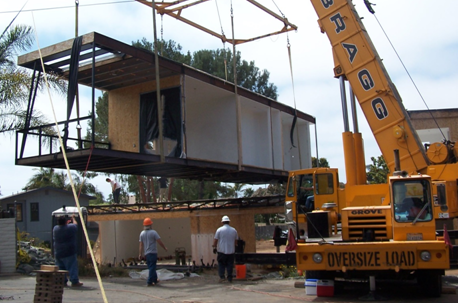
Modular Building
USINFO | 2013-10-23 16:56

Modular buildings differ from mobile homes, which are also called manufactured homes, in two ways. First, modular homes do not have axles or a frame, meaning that they are typically transported to their site by means of flat-bed trucks. Secondly, modular buildings must conform to all local building codes for their proposed use, while mobile homes, made in the United States, are required to conform to federal codes governed by HUD (U.S. Department of Housing and Urban Development). There are some residential modular buildings that are built on a steel frame (referred to as on-frame modular) that do meet local building codes and are considered modular homes, rather than mobile homes
Modular buildings may be used for long-term, temporary or permanent facilities, such as construction camps, schools and classrooms, civilian and military housing, and industrial facilities. Modular buildings are used in remote and rural areas where conventional construction may not be reasonable or possible, for example, the Halley VI accommodation pods used for a BAS Antarctic expedition. Other uses have included churches, health care facilities, sales and retail offices, fast food restaurants and cruise ship construction.
Some home buyers and some lending institutions resist consideration of modular homes as equivalent in value to site-built homes. While the homes themselves may be of equivalent quality, entrenched zoning regulations and psychological marketplace factors may create hurdles for buyers or builders of modular homes and should be considered as part of the decision-making process when exploring this type of home as a living and/or investment option. In the UK and Australia, modular homes have become accepted in some regional areas; however, they are not commonly built in major cities. Recent innovations allow modular buildings to be indistinguishable from site-built structures。
The high cost of living in coastal areas, and especially California, may provide modular construction an edge due to its lower cost. Extreme building regulation and environmental requirements can delay the start of residential construction. However, the speed of the actual construction process and cost efficiencies work to provide a home at great value. Several factories specialize in environmentally responsible construction by following green construction standards and offering zero energy homes.
Share this page



















